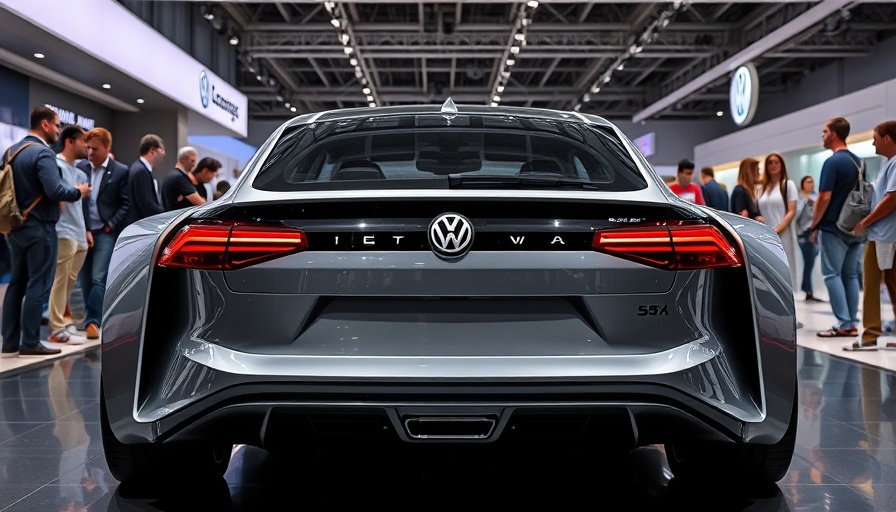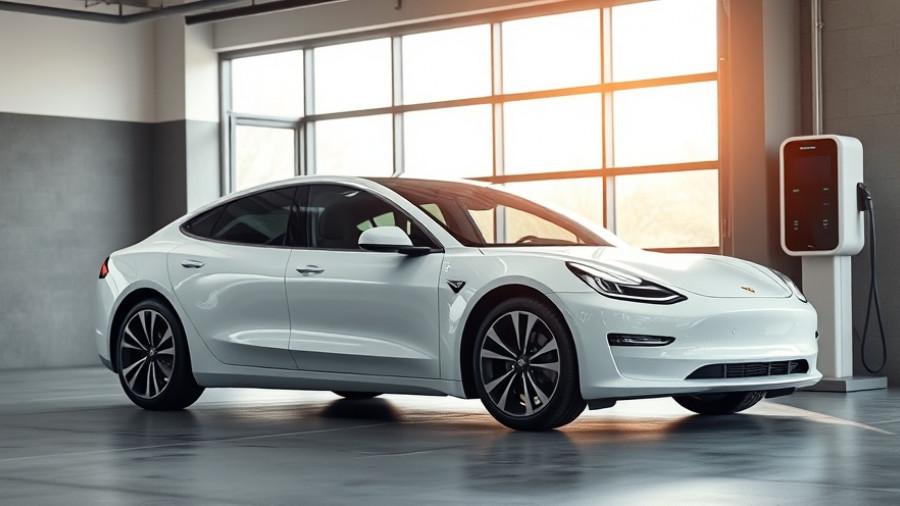
The Future of Mobility: A Shift Towards Electrification
At the forefront of the automotive revolution, the IAA Mobility 2025 trade show has showcased a pivotal transition from traditional combustion engines to electric mobility. This year marks a turning point in how we perceive transportation, not merely as a means of travel but as an integrated element of sustainable living. The spotlight naturally fell on innovations that signal a clear future path, bridging the desires of eco-conscious consumers with the evolving capabilities of automotive technology.
The Dominance of Chinese Manufacturers
China's overwhelming presence at IAA Mobility cannot be understated. With representation from over 116 companies, it has cemented its status as a modern powerhouse in automotive innovation. As the global market continues to embrace electric vehicles (EVs), Chinese manufacturers are leading the charge, often outpacing Western counterparts in both production and technological advancements. This trend sends a clear message: for homeowners and businesses invested in green energy solutions, aligning with these rapidly advancing technologies offers a compelling opportunity for sustainability.
Germany’s Resilience Amidst Competition
Despite the emerging dominance of Chinese firms, German automotive giants like BMW, Audi, and Volkswagen continue to show robust resilience. The BMW iX3 emerges not just as a vehicle but as a pillar of hope for the domestic industry, representing the shift towards electrification and sustainable solutions.
Moreover, key stakeholders at IAA highlighted the importance of technological openness amidst the debate on fossil fuels and HEVs (hybrid electric vehicles). This suggests that while Germany's roots are in conventional automotive production, the future is electric—positioning it as a partner in the broader conversation about sustainable mobility.
The Inevitable Move Away from Combustion Engines
The discussions surrounding the phase-out of combustion engines were palpable. Leaders in the industry assert that the complete transition to electric drivetrains is not just desirable but necessary for meeting future emissions targets. With the International Council on Clean Transportation (ICCT) predicting a rise in EV sales, the data solidifies the path forward for traditional car companies.
For those interested in integrating renewable energy into their daily lives—be it through solar-powered home charging stations or energy-efficient technologies—the implications are significant. As the automotive industry pivots towards electrification, homeowners can look forward to enhancing their energy independence while contributing positively to the environment.
Understanding the Shift through Emerging Technologies
The innovations displayed during IAA Mobility are tremendously relevant to current trends in household energy consumption and electric vehicle technology. As manufacturers explore new advancements in battery technology and sustainability—including solar charging capabilities—there emerges an intersection of automotive and residential energy strategies.
This synergy invites those invested in green energy to think critically about how they will power their lives in the coming years. As electric vehicles become more mainstream, integrating these vehicles with home solar solutions will likely become not only popular but essential for energy sustainability.
A Call to Embrace Change
With the momentum building around electric vehicles and sustainable mobility, now is the time for home and business owners to evaluate their energy consumption strategies. Transitioning to electric transportation, coupled with solar solutions, offers dual benefits: reducing overall fossil fuel reliance and capitalizing on technological advancements to enhance energy efficiency.
As the automotive industry evolves, becoming informed about these changes and investing in green technologies can position consumers at the forefront of the energy transition, ensuring they benefit from the shifting landscape.
Conclusion: Harnessing the Future of Transportation and Energy
The ongoing discussions and innovations coming out of the IAA Mobility 2025 fair highlight an essential transition not only in automotive technology but in how we perceive energy and transportation as interconnected. As homeowners seek to adopt sustainable practices, integrating electric vehicles and solar technology emerges as a clear advantage.
Investing in these solutions is not merely a choice but a step towards energy independence and environmental stewardship. Keep informed and consider actionable steps today to participate in the green revolution.
 Add Row
Add Row  Add
Add 



Write A Comment